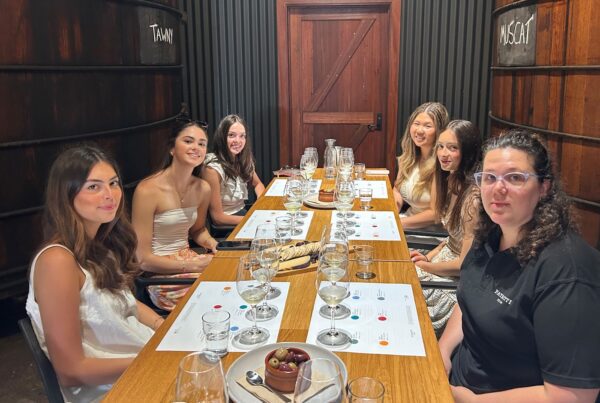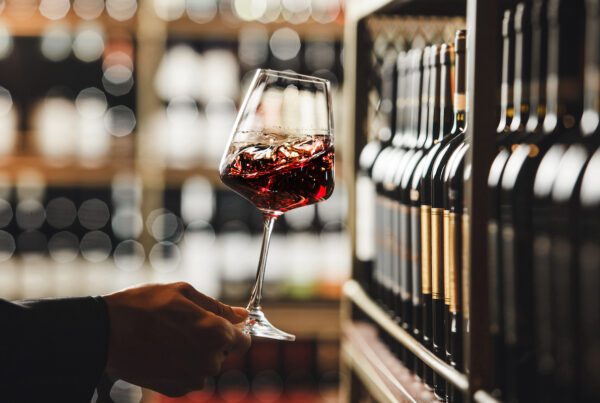
While it’s important to understand the culture of your winery, there’s a lot to be gained from looking at the culture of the whole wine industry.
“Culture eats strategy for breakfast.” Peter Drucker.
If you’ve been to a management course or picked up a business management book in the last 10 years, you’ll probably be familiar with the above quote, attributed to the late management thinker Peter Drucker.
The cult of culture is alive and well, and it is widely seen as being more important to success than strategy or structure. Culture – often described as “the way we do things around here”– is one of the most important things to understand and to influence. We normally talk about organisational culture within businesses, but culture within industries can also be worth looking at.
“Working out what’s important, communicating that to the team, and working on agreed, measurable outcomes, can have a huge impact on specific goals”
Consider our cellar doors and the culture around them in Australia. Historically, the ‘free tasting over a bar’ has been standard practice in Australia, although this is starting to change. If we look at California, and the Napa Valley in particular, there’s a very different culture. Paid tasting flights, seated tastings, a focus on selling wine clubs, and a more ‘experiential’ winery visit, are all features of the cellar door (more accurately called ‘tasting room’) experience in the Napa Valley.
Having seen free and paid tastings at wineries from the winery and consumer perspectives, I’m convinced that charging for tastings is the way to go for most wineries. Here are some reasons why – the last of them being the most important:
- Charging for tasting shows that you value your wine highly – you don’t give it away.
- Paying for tasting will encourage visitors to also value the wine more highly – we value things more highly if we pay for them.
- Charging can offset the cost of the staff and the wine.
- Charging can encourage purchase if the fee is redeemable.
- Charging for tastings gives a record of how many tastings have been sold, and it is then easy to measure the percentage of conversions to sales, wine club and mailing lists. That’s the clincher for me.
That said, there’s no one right or wrong way to run a cellar door or tasting room, but given the importance of direct sales to most small and medium-sized wine businesses, thinking about the best way to run winery visitation is time well spent.
A few other things to keep in mind when setting up or refining cellar doors:
- If the retail channel is important to the strategy, are we respecting retail stockists by not undercutting retail pricing, and also respecting visiting customers by offering competitive pricing?
- Are we imploring wholesale sales managers to avoid discounting, and then offering 20 percent off for a mixed dozen at the cellar door?
- If our strategy is to be a leading producer in our region of single vineyard grenache, is that reflected in our tasting room offering? Or are we focusing on selling regional shiraz at a lower price because that’s easier and generates cash flow? How can we reconcile long term reputational aims and short term cash flow needs?
- Is the ‘sales by varietal’ mix where we want it to be? What is it telling us about our wines, our pricing, and the market, and how can we influence it, using price, staff training, or point of sale cues?
- Having invested in a cellar door, in staff, training, point of sale and CRM software, we’ve got a brilliant tool to get feedback. Don’t waste it!
- Do our events fit our brand values and
our culture? - Do we have the capability to sell our events and execute them well?
- Is the purpose of events to make money on ticket sales, and/or sell wine, and/or build the database, reward club members, etc. How are the outcomes measured?
Inspect what you expect
Getting back to culture, the idea of ‘inspect what you expect’ is one that is important in executing strategy and influencing culture in the cellar door. Working out what’s important, communicating that to the team, and working on agreed, measurable outcomes, can have a huge impact on specific goals, be it overall sales, conversion to mailing list or wine club, or specific targets for individual wines.
Thanks to the USA market, and in particular research by organisations like ShipCompliant and Silicon Valley Bank, there is a lot of data available that can be used to set benchmarks for our businesses in Australia. Sales from US wineries to direct customers jumped 18.5 percent to USD 2.33 billion in 2016, so there’s much to be gained from understanding their trends and best practice. And the good news is, that as more wineries invest in this area, selling and buying direct from wineries will become more a part of Australia’s wine culture.
Alternatively, if we really get our supply and demand right, we could take a leaf from a winery in McLaren Vale, who simply advises: The cellar door re-opens annually in November for three weekends.
Further reading














Recent Comments